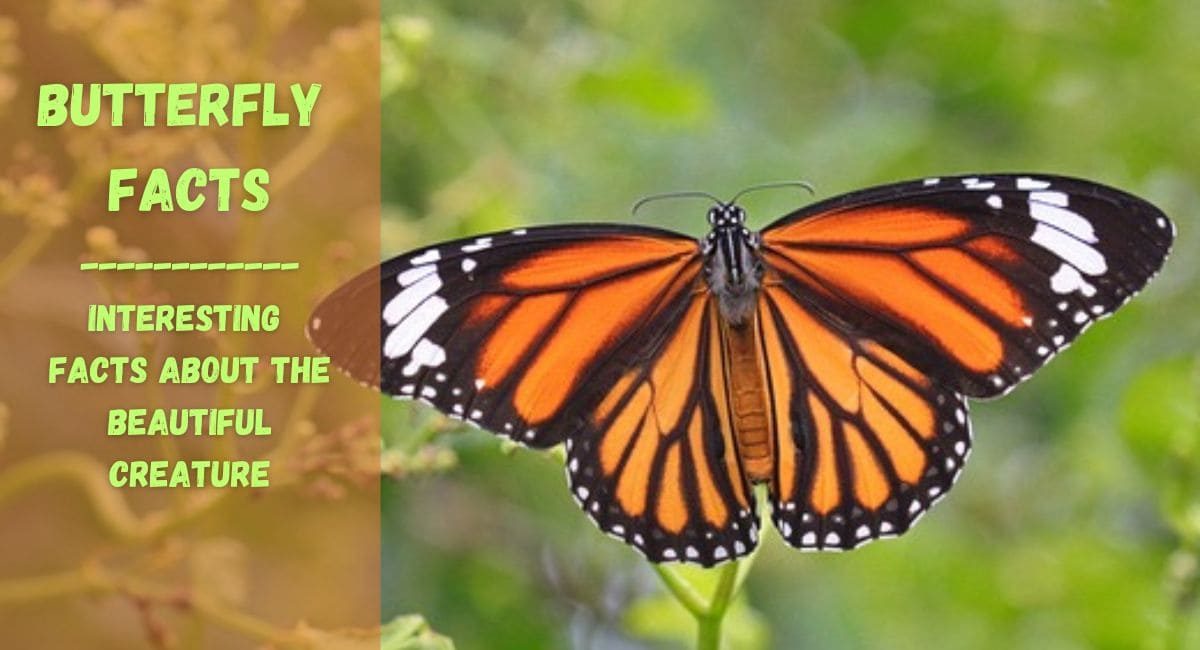One of the nature’s most beautiful creation is butterfly. There are many fascinating butterfly facts that we do not know yet. These colourful insects can be found all over the world with different variety of shapes and sizes. Each species has its own unique characteristics.
They have delicate wings that are covered in intricate patterns and vibrant colours, making them admirable. They flit and flutter from flower to flower, bringing colour and life to gardens and meadows everywhere.
The beauty of butterflies is not just skin deep, though. They also play an important role in our ecosystem by pollinating plants and serving as a food source for other animals.
One of the most amazing things about butterflies is their ability to transform from a crawling caterpillar to a graceful flying insect. So the process take place of transforming during their life cycle, from egg to caterpillar to pupa and finally to a fully-formed butterfly.
10 Fascinating Butterfly Facts
Let us now find more butterfly facts that can amaze you.
Read More: Sea Dinosaur: Facts and Myths
Butterflies do not have Mouth
However butterflies don’t have mouth, it does not mean they can’t feed themselves. Butterflies have a long, thin proboscis that they use to suck up nectar from flowers.
So next time when you see a butterfly feeding itself on a flower, just remember its actually drinking or sipping its food.
Are all Butterflies same?
No, the answer is simple. There are more than 20,000 species of Butterflies in the world. Monarch, Swallowtail and Blue Morpho are some of the most commonly known Butterfly species. Are these Butterfly facts fun? Yes, let’s find out more of them.
Can anyone taste with their feet?
Yes, Butterflies. This sounds crazy but it’s one of the most fascinating butterfly facts. Butterflies do have their tiny taste buds on their toes. When they land on a flower, they use their feet to taste the nectar to determine whether it’s a good source of food.
Butterflies can see Ultraviolet light
Butterflies have some of the most sophisticated eyes in the insect world. They can see colors that are beyond our range of vision, including ultraviolet light. This helps them to find flowers and other sources of food that we can not even see.
Smallest Butterfly in the world
Western Pygmy Blue is the smallest butterfly known in the world. You can most easily find this Butterfly flying in South and North America. Despite its small size, it’s a master of camouflage and can be difficult to spot.
Time to find biggest Butterfly in the world
Queen Alexandra’s birdwing is the largest Butterfly known in the world till date. Their wingspan is approximately around 27 centimetres. These Butterflies are found most commonly in Rainforests of Papua New Guinea. The sad reality about it is that this species is an endangered one.
Which country is the home for most number of butterfly species
Columbia and Peru the home for most varieties of Butterflies in the world. Their geographical diversities allow so many different species of butterflies thrive here. Most of the South American countries host a variety of Butterfly species due to their biodiversities. Columbia and Peru host at least 3,200 species of Butterflies.
The Butterfly wings are transparent
Yes, you heard it right. Butterfly wings are actually transparent. They have developed transparent wings in order to hide successfully from predators. How do we see colors then? They scatter light in different patterns due to the pigments on the wings. This scattering of light in diverse patterns allow us to see those vibrant natural colors making Butterflies beautiful.
Some Butterflies Migrate thousands of miles every year
There are plenty of butterfly species who do travel or migrate across countries every year. Monarch butterflies are famous for their long-distance migrations, which can take them from Canada to Mexico and back again. They travel in huge swarms and use the sun and the Earth’s magnetic field to navigate.
Butterflies are indicators of environment Health
Butterflies are sensitive to changes in their environment. They are sensitive to changes including temperature, weather patterns, and habitat. As such, they can serve as important indicators of the health of ecosystems and the impacts of climate change on biodiversity. Scientists have a common pattern of studying the Butterfly patterns to understand changes in ecosystem.
In conclusion, there are a bunch of engaging butterfly facts that fascinate us since the beginning of time. Butterflies play an important role in pollination, environmental health, and scientific research. So the next time you see a butterfly fluttering by, take a moment to appreciate its beauty and the many ways in which it contributes to our lives.
By protecting butterfly habitats and promoting conservation efforts, we can help ensure that these incredible insects continue to inspire and delight us for generations to come.
